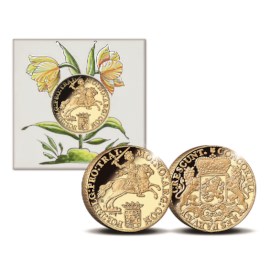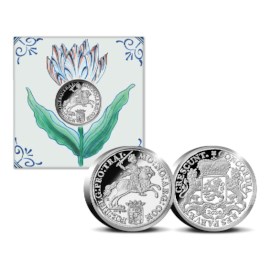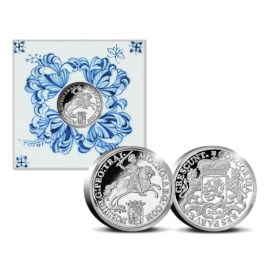Koninklijke Tichelaar is the only remaining company that still digs up local Frisian clay for making the Makkumer tiles and also makes the tin glaze in-house according to their own, secret recipes.

Official Restrike Ducaton
Koninklijke Tichelaar edition
View all issues
Official Restrike: Ducaton Gold 2 Ounce - Koninklijke Tichelaar edition
Unique tulip edge, only 20 pieces available!

Official Restrike: Ducaton Silver 2 Ounce - Koninklijke Tichelaar edition
Hand-painted tile, only 200 pieces available!

Official Restrike: Ducaton Platinum 2 Ounce - Koninklijke Tichelaar edition
Hand-painted and numbered, only 100 pieces available!

The trade of Royal Tichelaar
The Royal Dutch Mint and Koninklijke Tichelaar, the two oldest companies in the Netherlands still in business, have joined forces. This restrike of the Ducaton combines the strength and craftsmanship of the two companies to represent Dutch culture at its finest. The tulip, the flower that draws millions of tourists to the Netherlands on a yearly basis, is featured prominently in the design.Koninklijke Tichelaar has become a worldwide concept in the field of ceramics and glazes. For over 300 years “Makkumer” tiles are manufactured, also known as “whites”. For that reason this issue is placed in a unique, hand painted tile that shows a beautiful tulip.
In the tile you will find a restrike of an original Ducaton, the “Silver Rider”. According to many this is the most beautiful coin over issued. The Ducaton was considered legal tender from the 16th until the 18th century.
Each tile is hand-painted by the painters of Koninklijke Tichelaar itself. An artisanal and special process which makes each tile unique. On this page we will show you how the tiles are made.
